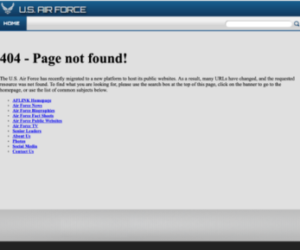
Excellent management of all the facilities in your care keeps costs down, reduces emergencies, and leads to more satisfied clients and patrons. Facilities management software is often an indispensable tool to optimize your workflows and increase awareness of issues before they get out of control. Here are some of the specific benefits this kind of software could bring.
Supports Mobile Working
Today’s workforce is increasingly on the move throughout a typical day. Some employees split their time between home and office while others are on the road frequently, making sales calls or consulting with clients.
The flexibility to work from anywhere is especially useful for facilities managers. It’s not always feasible to sit behind a desk when accessing data. Plus, a growing percentage of your workforce likely grew up in the digital age, so asking them to use an app is not a request that comes with a major learning curve. It’s also promising that average mobile data transmission speeds have increased 250% over the past five years.
Many facilities management software options are cloud-based and let any authorized person use them from a preferred mobile device. That capability increases a manager’s ability to make confident and data-backed decisions, whether checking stock levels of cleaning supplies or determining when the building’s climate-control system was last serviced.
The mobile functionality also increases worker collaboration, even across significant distances. For example, if the facility you manage is a university, there are almost certainly people tasked with the upkeep of buildings spread across many acres and miles. Bringing a smartphone or tablet equipped with facility management software is much easier than stopping several times during the day to find a computer to use when employees need to connect with colleagues.
Reduces Manual Processes
Specialty software for facilities management can also achieve productivity and accuracy gains by reducing the number of tasks people do by hand. Many can automate processes used to create support tickets or generate monthly reports. Those benefits save time by freeing up more of a user’s schedule to accomplish other things.
Even as facilities managers become more open to the idea of using software in their work, they’re not embracing it as much as they could. A recent survey found that 62% still use spreadsheets when managing estates. That approach doesn’t guarantee errors, but it limits the potential for optimization.
People interested in using facility management software should take the time to determine which operational processes are the most time-consuming, prone to error or always done manually. That makes it easier to see how a platform could help.
The decreased reliance on manual processes also comes in handy when one company manages several properties in a given area, such as apartment complexes. Software can keep track of what tasks need doing and where, minimizing the need for manual recordkeeping and eliminating instances where workers are not sure which duties require their immediate attention.
Minimizes Overspending
Facilities management software can also provide better visibility to curb overspending. Leaders in the manufacturing sector commonly experience that benefit when they switch from reactive to predictive maintenance. Statistics show up to 30%-40% in savings when adopting the latter.
Predictive maintenance programs succeed with the help of smart sensors. However, facilities managers can still control overspending before implementing them. That’s because software can keep essential maintenance data all in one place. For example, knowing the age of all a building’s climate control systems can help managers anticipate future equipment replacements.
Similarly, software can track how quickly supplies — whether cleaning fluids, toilet paper or pens — are depleted. Keeping tabs on that ensures people buy replacements on an appropriate schedule. Otherwise, they might purchase the items long before it’s necessary, taking a just-in-case approach.
Software allows making a comprehensive assets inventory, too. It generally includes all assets that need regular maintenance and those that would significantly disrupt operations if they failed. Additionally, the documentation typically features all higher-dollar items of a certain amount. The value varies depending on a venue’s type and use. However, it’s often between $1,000 and $5,000. That comprehensive list ensures managers spend on the right things at the appropriate times.
Enhances Staff and Patron Safety
Facilities managers also invest in software to increase the safety of everyone on the premises. Rhys Clare, the director of solutions at Motorola Solutions Asia Pacific, explained, “As a facility manager or operator of stadiums, commercial or public buildings, your job has evolved into one that requires a greater level of heightened situational awareness, responsiveness and flexibility to make changes at short notices, at any time.”
Software can give managers a broad overview of activities at a facility. It also allows them to get more specific details, such as statistics about traffic flows through a certain entrance or on a particular building level. That information minimizes issues by allowing managers to become more proactive. It also helps emergency crews more efficiently reach a patron in distress.
Clare described additional possibilities, saying, “Early alerts of emerging incidents are automated and powered by machine learning analytics … When blacklisted personnel attempt to enter the venue, employees will consistently deny entry to them. Any issues that fit into the watch lists or anomalies will be flagged proactively; response teams will be alerted, activated and actions will be taken quickly to resolve the incident before it escalates further.”
Software also makes it easier to focus on safety by ensuring each employee has enough access to do their jobs, but not too much. It’s often necessary to change someone’s privileges when they get promoted to a new role. Similarly, if someone leaves an organization on bad terms, they mustn’t retain building access.
Create an Action Plan Before Investing in Facilities Management Software
You may initially feel compelled to purchase facilities management software after hearing how competitors use it. That’s understandable, but it’s crucial to understand the specific existing challenges in your organization that software could help overcome. Iron out the details surrounding how and why you want to use a product before committing to it.
Realize there will likely be an adjustment period, too. Employees need time to get used to the software, and you may need to set aside training time. After getting through the early phases, though, you’ll be on your way to seeing the short- and long-term payoffs.
Emily Newton is the Editor-in-Chief of Revolutionized, an online magazine discussing the latest technologies changing our world.
















